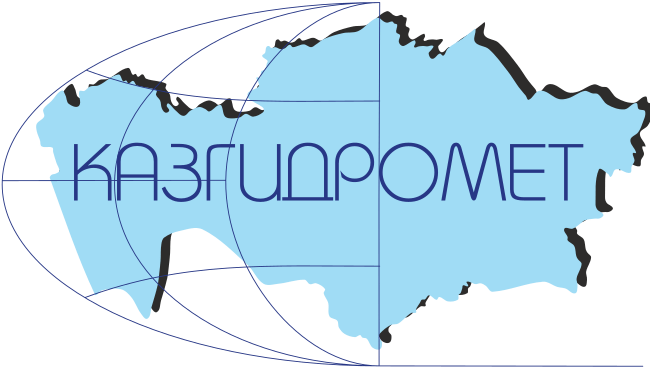РЕГИОНАЛЬНАЯ АГРОМЕТЕОРОЛОГИЧЕСКАЯ МОНИТОРИНГОВАЯ СЕТЬ ДЛЯ ПРОГНОЗИРОВАНИЯ ВОДНОГО РЕЖИМА АГРОЦЕНОЗОВ ЗАСУШЛИВЫХ ОБЛАСТЕЙ КАЗАХСТАНА
DOI:
https://doi.org/10.54668/2789-6323-2025-118-3-34-47Ключевые слова:
агрометеорологическая сеть, влажность почвы, ГИДРОТЕРМИЧЕСКИЙ КОЭФФИЦИЕНТ Г.Т. СЕЛЯНИНОВААннотация
В статье обсуждается актуальность проведения наземного инструментального мониторинга за ходом температуры и влаги в почве в условиях дефицита водных ресурсов в засушливых регионах мира. Приведено описание приборной базы агрометеорологических стационаров, развернутых в период 2021…2024 гг. в рамках проектов Министерства образования РК на базе фермерских хозяйств Восточно-Казахстанской области. Приведены предварительные результаты обработки измерений температуры и влажности почвы в метровом слое на поле, которое в течение вегетационных периодов 2022…2024 гг. находилось под сидеральным паром (Люцерна серповидная) на территории ТОО «Опытное хозяйство масличных культур». Измеряемые данные хорошо согласуются с результатами наблюдений Национальной сети «Казгидромет» и удовлетворительно отражают общую динамику хода критических параметров растениеводства в различные по влагообеспеченности вегетационные периоды 2022, 2023, 2024 года. Полученные результаты по динамике температуры воздуха, осадков, а также температуры и влажности почв в метровом слое могут быть полезны руководителям фермерских хозяйств при выборе севооборотов включая различные формы парования полей, которые повышают влагосбережение, что особенно актуально в засушливых условиях Казахстана. Результаты могут представлять интерес для страховых компаний и лиц, принимающим решения в сфере растениеводства.
Библиографические ссылки
Саммит "Единая вода": на пути к миру, устойчивому к воздействию воды [Электрон. ресурс] // Министерство водных ресурсов и ирригации Республики Казахстан. – URL: https://www.gov.kz/memleket/entities/water/documents/details/783067?lang=ru (дата обращения: 28.01.2025).
Wang-Erlandsson, L., Tobian, A., Van der Ent, R. J., Fetzer, I., te Wierik, S., Porkka, M., ... & Rockström, J. (2022). A planetary boundary for green water. Nature Reviews Earth & Environment, 3(6), 380-392. https://doi.org/10.1038/s43017-022-00287-8
Seneviratne, S. I., Corti, T., Davin, E. L., Hirschi, M., Jaeger, E. B., Lehner, I., ... & Teuling, A. J. (2010). Investigating soil moisture–climate interactions in a changing climate: A review. Earth-Science Reviews, 99(3-4), 125-161. https://doi.org/10.1016/j.earscirev.2010.02.004
Liu, Y., & Li, Y. (2019). Synergy and trade-off between carbon sequestration and soil water balance: impact of revegetation choices. Environmental Earth Sciences, 78(23), 651.
Humphrey, V., Berg, A., Ciais, P., Gentine, P., Jung, M., Reichstein, M., ... & Frankenberg, C. (2021). Soil moisture–atmosphere feedback dominates land carbon uptake variability. Nature, 592(7852), 65-69. https://doi.org/10.1038/s41586-021-03325-5
Boyer, T., Bartow-Gillies, E., Abida, A., Ades, M., Adler, R., Adusumilli, S., ... & Feely, R. A. (2023). Introduction [in “State of the Climate in 2022 “]. https://doi.org/10.1175/BAMS-D-23-0090.1
Qiao, L., Zuo, Z., Zhang, R., Piao, S., Xiao, D., & Zhang, K. (2023). Soil moisture–atmosphere coupling accelerates global warming. Nature Communications, 14(1), 4908. https://doi.org/10.1038/s41467-023-40641-y
Zhang, X., Feng, G., & Sun, X. R. (2024). Advanced technologies of soil moisture monitoring in precision agriculture. Journal of Agriculture and Food Research, 101473. https://doi.org/10.1016/j.jafr.2024.101473
Albergel, C., Rüdiger, C., Pellarin, T., Calvet, J. C., Fritz, N., Froissard, F., ... & Martin, E. (2008). From near-surface to root-zone soil moisture using an exponential filter: an assessment of the method based on in-situ observations and model simulations. Hydrology and Earth System Sciences, 12(6), 1323-1337. https://doi.org/10.5194/hess-12-1323-2008
Li, P., Zha, Y., Shi, L., Tso, C. H. M., Zhang, Y., & Zeng, W. (2020). Comparison of the use of a physical-based model with data assimilation and machine learning methods for simulating soil water dynamics. Journal of Hydrology, 584, 124692., ISSN 0022-1694. https://doi.org/10.1016/j.jhydrol.2020.124692
Wyatt, B. M., Ochsner, T. E., & Zou, C. B. (2021). Estimating root zone soil moisture across diverse land cover types by integrating in-situ and remotely sensed data. Agricultural and Forest Meteorology, 307, 108471. Qin Jun, Tian Jiaxin, Yang Kun, Lu Hui, Li Xin, Yao Ling, Shi Jiancheng, Bias correction of satellite soil moisture through data assimilation, Journal of Hydrology, Volume 610, 2022, 127947, ISSN 0022-1694. https://doi.org/10.1016/j.jhydrol.2022.127947
Qin, J., Tian, J., Yang, K., Lu, H., Li, X., Yao, L., & Shi, J. (2022). Bias correction of satellite soil moisture through data assimilation. Journal of Hydrology, 610, 127947, ISSN 0022-1694. https://doi.org/10.1016/j.jhydrol.2022.127947
Liu, E., Zhu, Y., Lü, H., Horton, R., Gou, Q., Wang, X., ... & Pan, Y. (2023). Estimation and assessment of the root zone soil moisture from near-surface measurements over Huai River Basin. Atmosphere, 14(1), 124. https://doi.org/10.3390/atmos14010124
Global Climate Observing System (GCOS) https://gcos.wmo.int/ru/node/24885
Dorigo, W., Himmelbauer, I., Aberer, D., Schremmer, L., Petrakovic, I., Zappa, L., ... & Sabia, R. (2021). The International Soil Moisture Network: serving Earth system science for over a decade. Hydrology and Earth System Sciences Discussions, 2021, 1-83. https://doi.org/10.5194/hess-25-5749-2021
Ikonen, J., Vehviläinen, J., Rautiainen, K., Smolander, T., Lemmetyinen, J., Bircher, S., & Pulliainen, J. (2016). The Sodankylä in situ soil moisture observation network: An example application of ESA CCI soil moisture product evaluation. Geoscientific Instrumentation, Methods and Data Systems, 5(1), 95-108. https://doi.org/10.5194/gi-5-95-2016
Reynolds, S. G. (1970). The gravimetric method of soil moisture determination Part IA study of equipment, and methodological problems. Journal of Hydrology, 11(3), 258-273. https://doi.org/10.1016/0022-1694(70)90066-1
Robinson, D. A., Campbell, C. S., Hopmans, J. W., Hornbuckle, B. K., Jones, S. B., Knight, R., ... & Wendroth, O. (2008). Soil moisture measurement for ecological and hydrological watershed-scale observatories: A review. Vadose zone journal, 7(1), 358-389. https://doi.org/10.2136/vzj2007.0143
Hodges, B., Tagert, M. L., Paz, J. O., & Meng, Q. (2023). Assessing in-field soil moisture variability in the active root zone using granular matrix sensors. Agricultural Water Management, 282, 108268, ISSN 0378-3774. https://doi.org/10.1016/j.agwat.2023.108268
Беляев, В. И., Силантьева, М. М., Никулин, А. М., & Бондарович, А. А. (2021). Кулунда: сельское хозяйство и низкоэмиссионные технологии устойчивого землепользования: коллективная монография. URL: https://cyberleninka.ru/article/n/temperaturnyy-rezhim-vozduha-i-pochvy-po-dannym-meteorologicheskoy-i-pochvenno-gidrologicheskoy-monitoringovoy-seti-v-kulundinskoy (дата обращения: 07.04.2025).
Nyssanbayeva, A. S., Cherednichenko, A. V., Cherednichenko, V. S., Abayev, N. N., & Madibekov, A. S. (2019). Bioclimatic conditions of the winter months in Western Kazakhstan and their dynamics in relation to climate change. International journal of biometeorology, 63, 659-669.
Kottek, M., Grieser, J., Beck, C., Rudolf, B., & Rubel, F. (2006). World map of the Köppen-Geiger climate classification updated. DOI: 10.1127/0941-2948/2006/0130.
Beck, H. E., Zimmermann, N. E., McVicar, T. R., Vergopolan, N., Berg, A., & Wood, E. F. (2018). Present and future Köppen-Geiger climate classification maps at 1-km resolution. Scientific data, 5(1), 1-12. https://doi.org/10.1038/sdata.2018.214
Kazakhstan. Climate Change Overview Country Summary. The Climate Change Knowledge Portal (CCKP) [Электронный ресурс: https://climateknowledgeportal.worldbank.org/country/kazakhstan (дата обращения 28.01.2025)].
Пермитина В. Н., Байбулов А. Б. Растительность лесостепной зоны Северного Казахстана, классификация и антропогенная трансформация // Проблемы ботаники Южной Сибири и Монголии. – 2019. – Т. 18, № 1. – С. 360–364. – DOI: https://doi.org/10.14258/pbssm.2019072.
Chupakhin, V. Physical Geography of Kazakhstan; Mektep Press: Almaty, Kazakhstan, 1968; p. 260. [Google Scholar]
Uspanov, U.U.; Evstifeev, Y.G.; Storozhenko, D.M.; Lobova, E.V.; Kolkhozhaev, M.K.; Kotin, N.I.; et al. Soil Map of the Kazakh SSR; Ed. Voronina, L.M.; Scale: 1 cm to 25 km. Available online: http://www.etomesto.ru/map-kazakhstan_pochva-1976/ (accessed on 19 March 2025).
Осипова В. В. Влияние разных доз минеральных удобрений на формирование надземной массы люцерны серповидной в условиях мерзлотных засоленных почв Якутии // Вестник Северо-Казахстанского университета им. М. Козыбаева. – 2021. – № 2 (47). – С. 54–58.
Żarczyński, P. J., Krzebietke, S. J., Sienkiewicz, S., & Wierzbowska, J. (2023). The Role of Fallows in Sustainable Development. Agriculture, 13(12), 2174. https://doi.org/10.3390/agriculture13122174
Селянинов Г. Т. О сельскохозяйственной оценке климата //Труды по сельскохозяйственной метеорологии. – 1928. – Т. 20. – С. 165-177.
Селянинов Г. Т. Принципы агроклиматического районирования СССР //Вопросы агроклиматического районирования СССР. М.: МСХ СССР. – 1958. – С. 7-14.
Svoboda, M., & Fuchs, B. (2016). World Meteorological Organization (WMO) and Global Water Partnership (GWP). Handbook of Drought Indicators and Indices. Integrated Drought Management Programme (IDMP), Integrated Drought Management Tools and Guidelines Series, 2. [Электронный https://www.droughtmanagement.info/literature/GWP_Handbook_of_Drought_Indicators_and_Indices_2016.pdf (дата обращения 12.02.2024)].
Crabtree, B. (2010). In Search for Sustainability in Dryland Agriculture, Crabtree Agricultural Consulting, Australia. 204. URL: www. no-till. com. au (19. 3. 2023.).
Kassam, A., Friedrich, T., Shaxson, F., & Pretty, J. (2009). The spread of conservation agriculture: justification, sustainability and uptake. International journal of agricultural sustainability, 7(4), 292-320.
Байшоланов С. С. и др. Агроклиматическое районирование сельскохозяйственных культур в Северном Казахстане //Гидрометеорология и экология. – 2017. – №. 3 (86). – С. 17-28.
Саранча, сайгаки, засуха и ливни. 2023 год назвали худшим для аграриев [Электрон. ресурс]. – 2023. – URL: https://tengrinews.kz/kazakhstan_news/sarancha-saygaki-zasuha-livni-2023-god-nazvali-hudshim-510903/ (дата обращения: 28.01.2025).
Засуху прогнозируют в следующем агросезоне в Казахстане [Электрон. ресурс]. – Режим доступа: https://apk-news.kz/news/item-4319 (дата обращения: 12.04.2025).
Ральф М., Беляев В. И., Бондарович А. А., Понькина Е. В., Щербинин В. В., Быков Н. И. Сравнительный анализ температурного режима южных черноземов в условиях сухостепной зоны Кулундинской равнины Алтайского края // Вестник Алтайского государственного аграрного университета. – 2017. – № 11 (157). – С. 48–56.
Беляев В. И., Бондарович А. А., Понькина Е. В., Щербинин В. В., Шмидт Г., Мацюра А. В., ... Рудев Н. В. Температурный режим воздуха и почвы по данным метеорологической и почвенно-гидрологической мониторинговой сети в Кулундинской равнине за вегетационные периоды 2013–2016 гг. // Вестник Алтайского государственного аграрного университета. – 2017. – № 3 (149). – С. 30–37.
Загрузки
Опубликован
Как цитировать
Выпуск
Раздел
Лицензия
Copyright (c) 2025 Андрей Бондарович, Даурен Нурекенов, Мархаба Карменова, Нұрасыл Жомартқан, Юрий Каменов

Это произведение доступно по лицензии Creative Commons «Attribution-NonCommercial» («Атрибуция — Некоммерческое использование») 4.0 Всемирная.





